Coal Mine Hoist House
File this under obscure. Here we’ll be looking at the mostly complete inner workings of a coal mine hoist house and don’t worry, you’ll know more about that is in a moment. These massive chunks of metal were part of a sprawling coal mine, so big it extended for many clicks up the valley. Due to its out of the way location, this building was pretty complete until recently, as though they left one day with expectations to return to work the next. In the last few years, however, metal thieves and vandals have discovered it and run roughshod, swiping things and making a mess.
Sadly as such we’ll be unable to disclose the location, nor give any history that might offer a hint as to the location. Currently access is limited anyway, due to renewed mining activity, but still the firm doesn’t want anyone sneaking in. That these measures have to be taken has us quite frankly a bit bummed, a reality that’s not always easy to accept. And then so unlike our regular MO, we then have to keep quiet about what is some interesting backstory, or at best be vague.
The hoist house was part of the coal car-moving system. Think of it as a chair-lift of sorts but instead of taking people up to some mountain lookout or attraction, it’s for bringing down coal cars from workings higher up, via an inclined track, to then be unloaded on reaching the bottom. Coal cars would be acted on by a moving cable powered and controlled by this very machinery.
Meanwhile, empty cars would then be sent up to take their place. Full cars down, empty up, an endless parade, then rinse and repeat. At any one time there would be a large number in motion each holding perhaps a few tonnes of coal (a guess based on old photos). It’s not much really but over a day, it’d be a considerable amount of material brought down.
This sort of system was once common in mining (mostly coal mines it seems) in hilly or mountainous regions where no road could go. Interestingly the cable for this system, and some other odd bits and pieces like pulleys remain in place. Years ago, we followed the “wire rope” up a ridge for what must have been a couple kilometres to the point where it looped back upon itself. These were underground workings, up there, the adits closed up now, with a few foundations and a couple dumped mine cars scattered about as reminders of what once was.
The hoist house is where the machinery that powered it all was found. The huge motor (tall as a person), via some massive gears, acted a couple huge drums which then moved the cable. The power needed was not as much as one might think as the filled cars, acted on by gravity, helped bring up the empty ones. Still, there was a lot of friction in the system.
This is a variation of the tramway system used by other mines (coal or mineral), where instead of rail cars, material was brought down in cable suspended buckets. Each system had it’s advantages and disadvantages. While it’s not said explicitly in any papers we found, we think this operation was not of this configuration and followed the incline track system used by many front range coal mines. While searching the ridge above, we didn’t find signs of trackwork but it’s likely long gone anyway.
The drive system had a series of huge friction brakes acting on the drums and if need be, we suspect the whole thing could be brought to a grinding halt in short order. In one corner of the room, there’s a bank of motor control resistors. Exposed now, these were probably housed in some sort of cabinet and when in use likely produced much heat. That’s nice when it’s -30c (interestingly, the temperature the day we wrote this) but probably hell come summer. It’s possible (unconfirmed here, but sometimes done) the powering motor, driven as a generator, could also be used for controlled “dynamic” braking for downhill loads.
The motor, as you can see, has been smashed apart and copper wiring stripped. When we first saw this building in the 1990s, it looked at though you could have came in, flicked a switch and powered it up.
The drive drums show much wear (grooving) from the cable but it’s hard to see in the pics.
As yet, we’ve been unable to find where the cars were offloaded, but we suspect a flat area above the hoist house. From there, the material went by truck to a processing plant elsewhere.
As best we can tell the machinery here dates from the 1920s and used up to the 1950s period. Information on the mine is readily available to us but there’s no real mention of the hoist system itself. This mine was huge and they worked multiple levels and seams over its history, from the early 1900s to the late 1950s. In total they extracted millions of tonnes of coal in that time making Swiss Cheese of the ridges and hills which they worked.
The massive drive system needed a good solid footing of concrete as a base and walls of the same material helped mitigate damage should a machinery mishap take place. A cable breaking or the hoist over-speeding, for example, could have disastrous consequences and it’s best to confine the damage. The noise when operating was likely deafening and with all that exposed machinery, and electrical gear, it was clearly a dangerous place. One wrong move and you’d be ground up into little bits, or fried to a crisp and a red smear or perhaps a smoking pile of ash all that would be left. Missteps could end in something grizzly.
Most of the roof has or is in the process of collapsing. Overall it’s really deteriorated in the last dozen years or so, compared to when we first visited it decades ago (no photos).
Note: we made some stupid technical errors in this post when originally published and an expert set us straight. Thanks to Ian to get the ball rolling and know we’re not infallible.
Thank you for joining us as we explored these mining ruins and there’s something about big industrial machinery that we so love. Hope you feel the same. While it’s sad that this amazing piece of history is succumbing to time, the elements and a few misguided folks intent on destroying things, we’re glad to have had another chance to photograph it. We might not get it again.
Till the next adventure, cheers!
They’re saying…
”Your site and content is first class. I always enjoy seeing it. I will do better on my part to make it known!” John Asmus.
Coal Mine History…
Hillcrest Collieries Mine – big concrete remains.
Stirling Mine – Commander Mine – Nacmine Alberta – a jumble of coal cars.
Tent Mountain was torn a new one – a closed pit mine.
Historic Atlas Mine – a place you can visit.
If you wish more information on what you’ve seen here, by all means contact us!
Date of Adventure: June 2019.
Location(s): Undisclosed Alberta.
Article references and thanks: Alberta Energy Regulator.
Team BIGDoer was on site with permission.
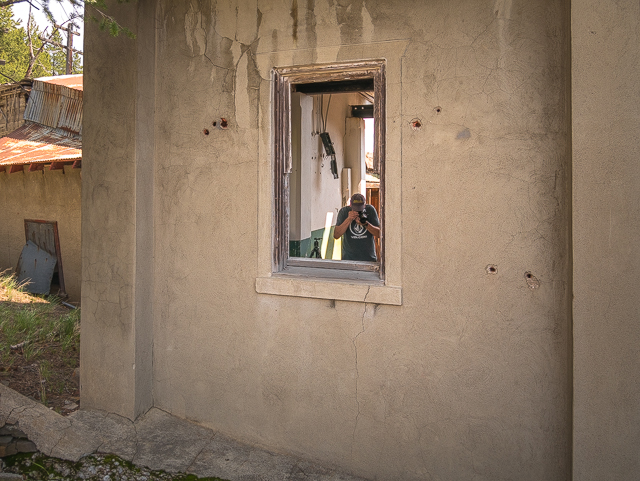
Thick walls of concrete.
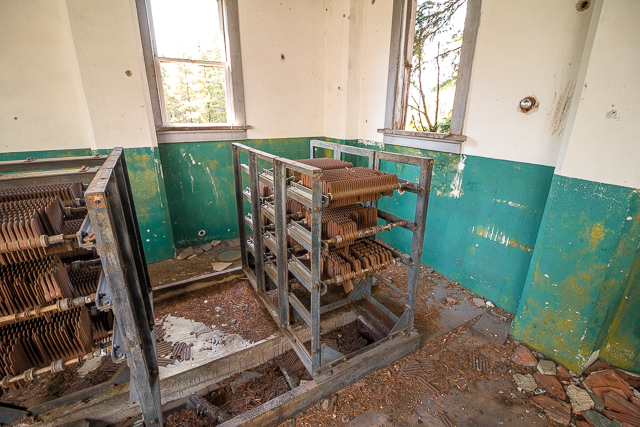
A bank of motor control resistors.
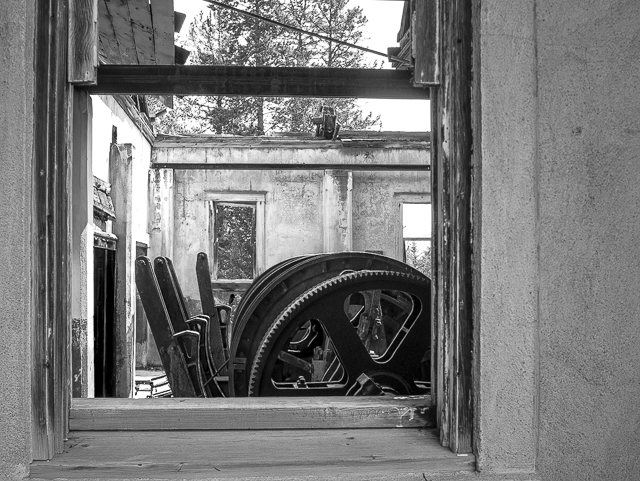
Levers are brakes.
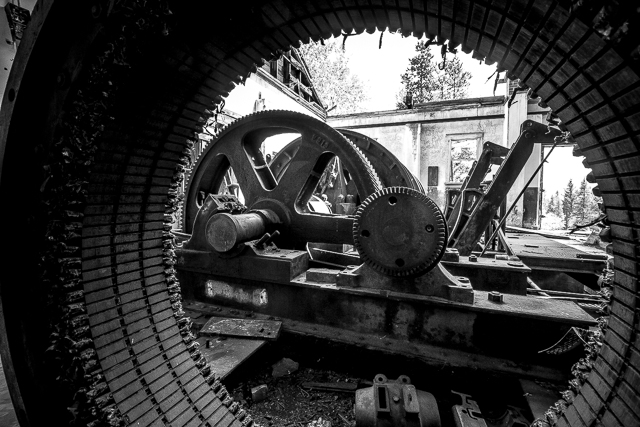
Machinery seems to be circa 1920s.
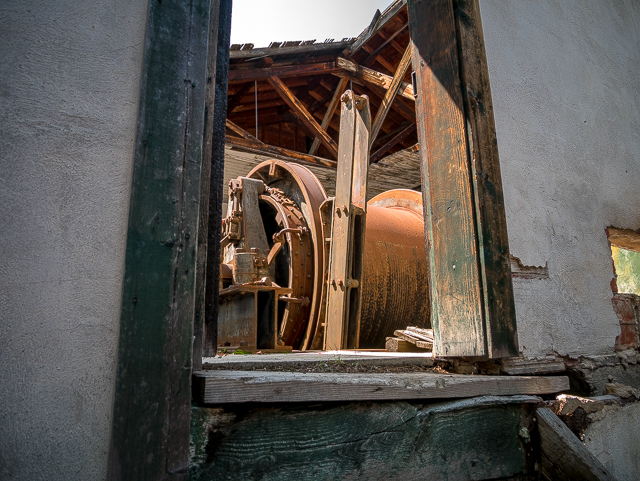
A cable drum.
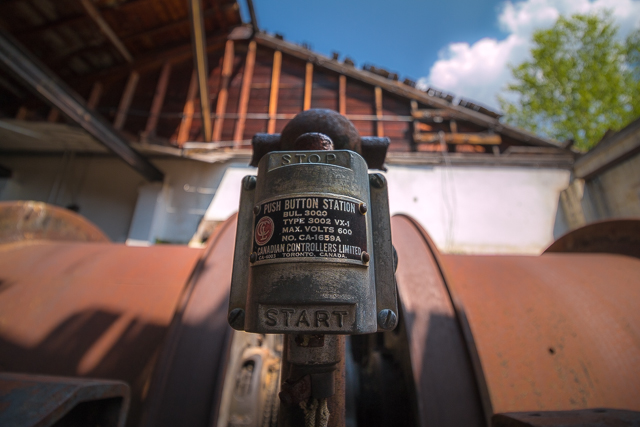
The master start/stop.
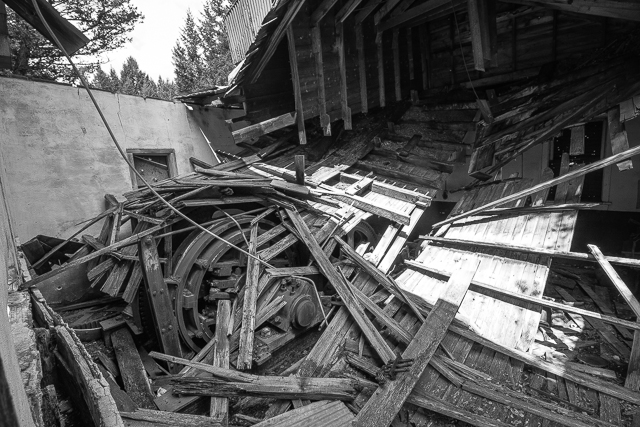
In a section that’s collapsed.
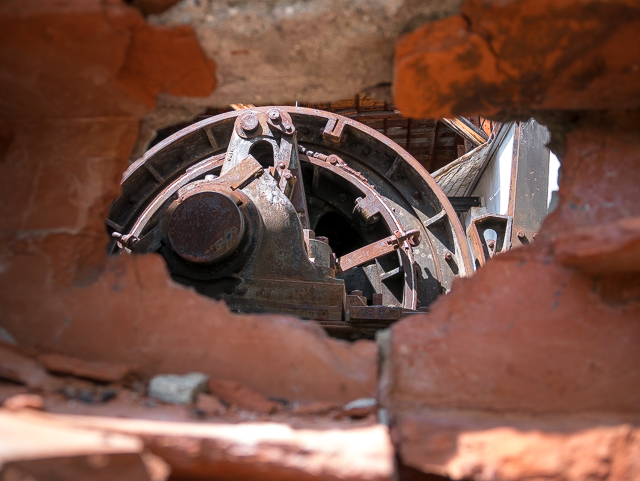
The hole in a wall view.
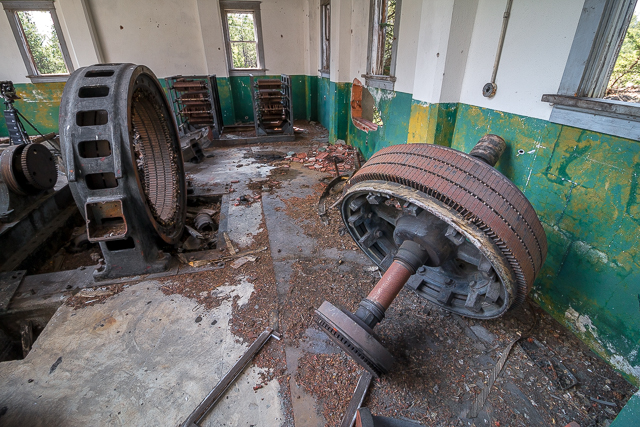
A motor torn apart by metal thieves.
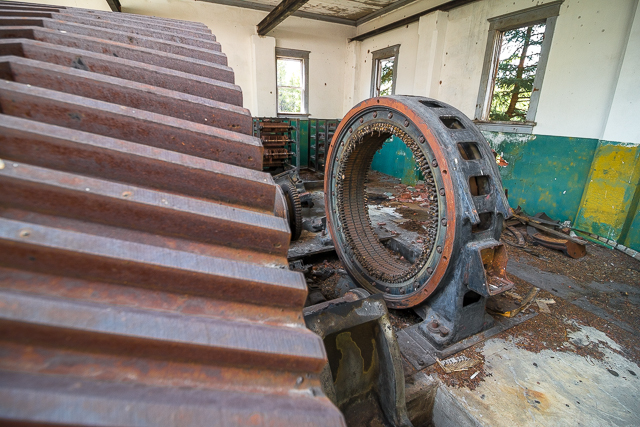
Everything’s on a massive scale.
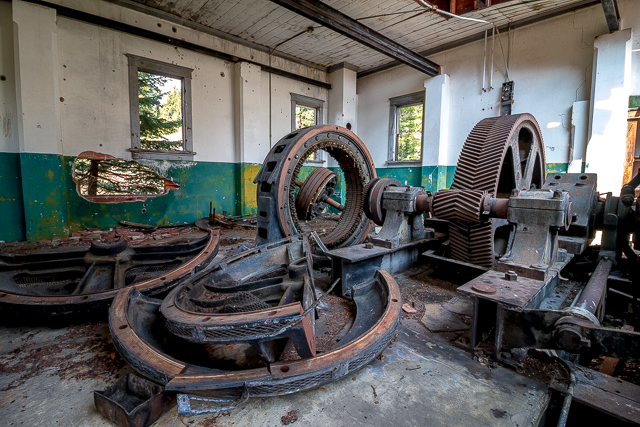
This is a coal mine hoist house.

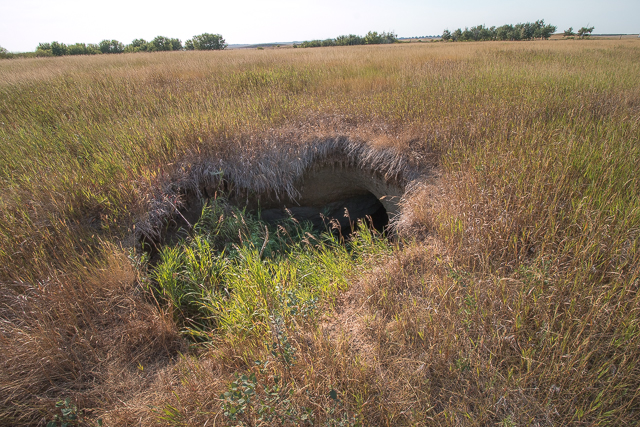
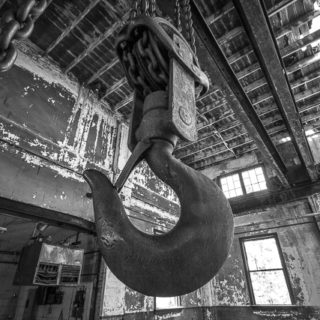
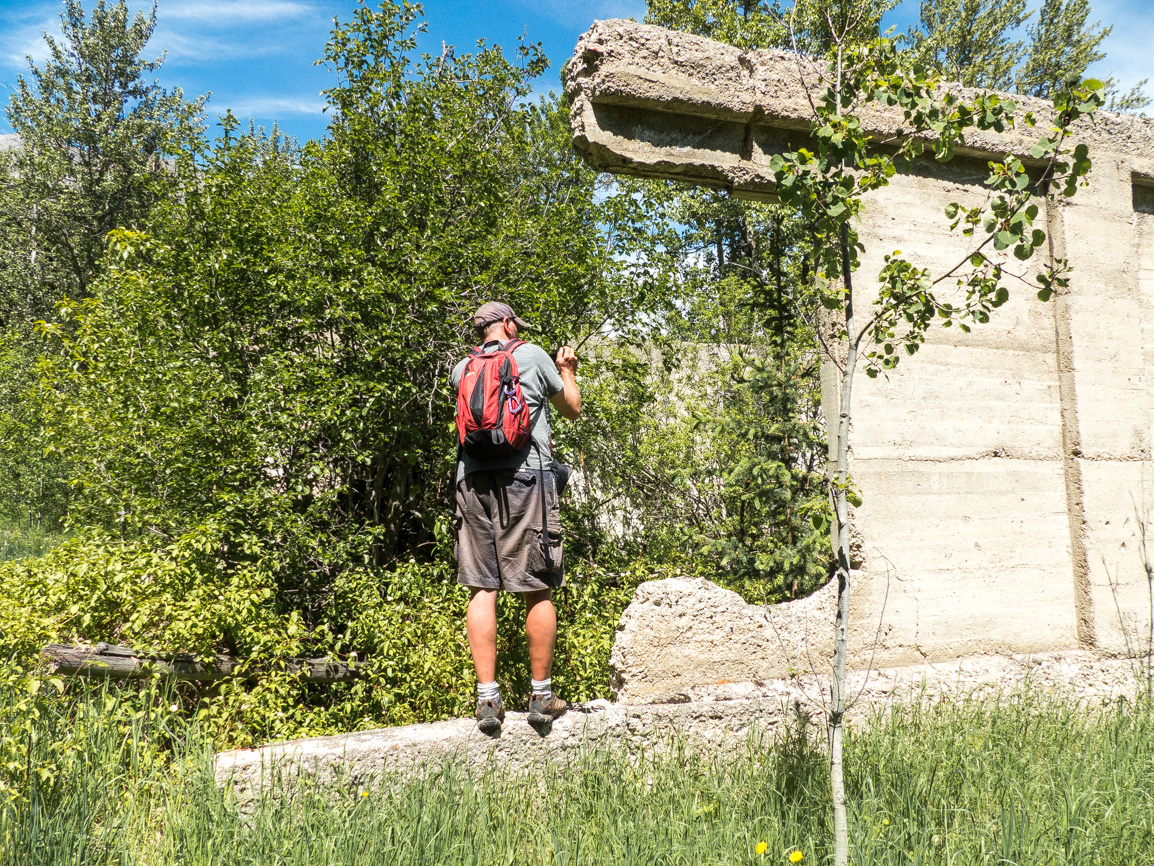
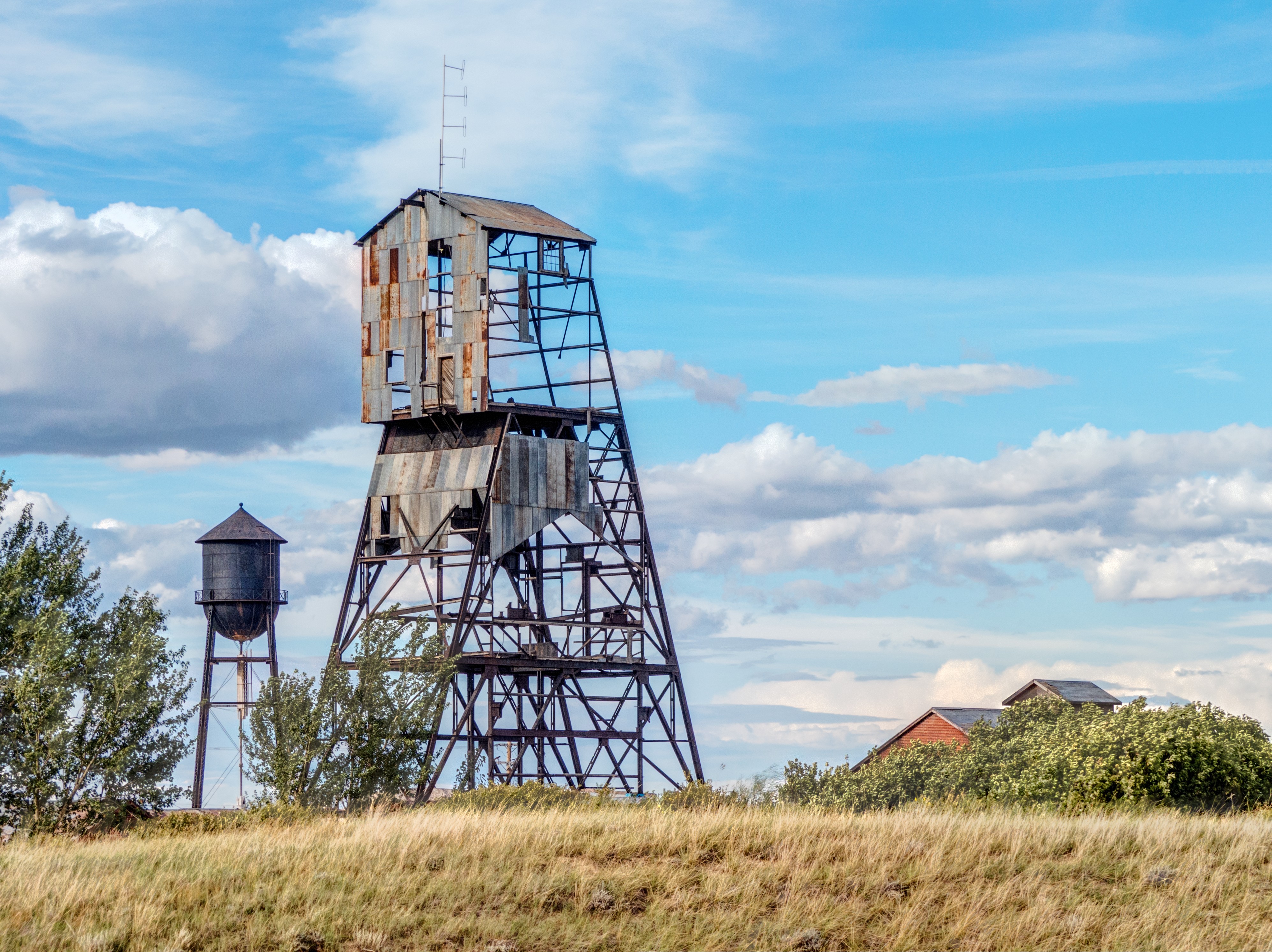
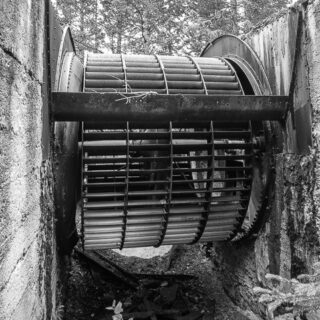
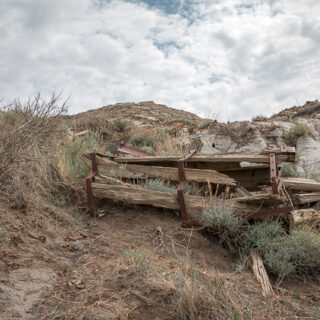
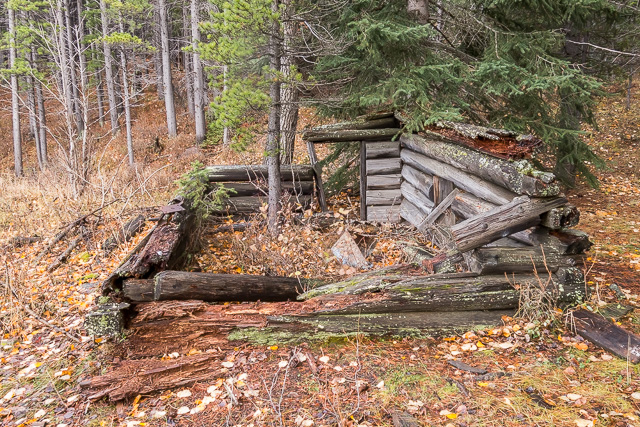
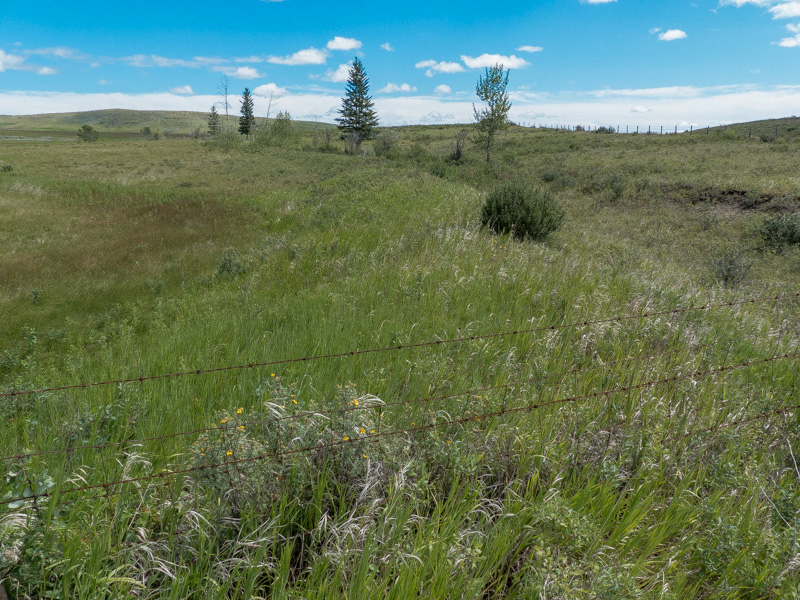
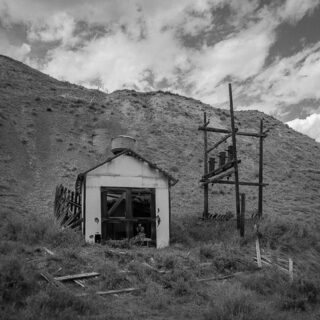
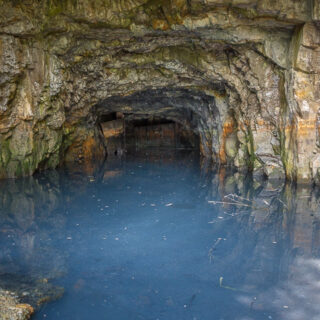
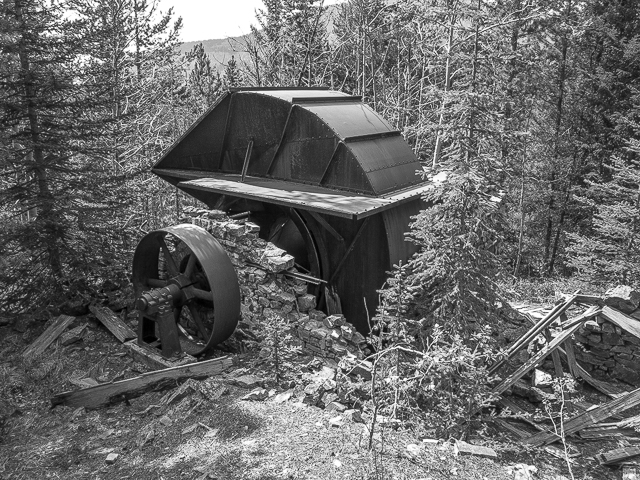
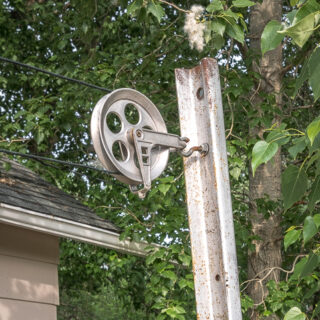







Don’t think there were any aerial trams here for moving coal. Hoist machinery was for moving coal cars along sloped rails, either underground or on the surface.
Interesting. We heard tramway. One thing we did was follow the cableway line all the way to the top of the ridge and what struck as odd, if an inclined railway was used, is the lack of remains. They would have had to minimally put a number of trestles and the like but all we found was the cable, the occasional pulley type thing and maybe once in a while piles of timbers we presumed to be support tower remains. Truth is, this post slipped our minds – brain like a sieve – and maybe if time allows we should look into this further. I know we found no photos when we first researched it, nor any real data saying one way or the other, but maybe a look with fresh eyes might bring something to light. Thanks!
Unfortunate that some punks destroy a piece of history for pennies.
I can’t see it being worthwhile $$ wise, but yet it happened.
Very cool
Thanks for commenting!
Massive power
Absolutely!
Cool stuff.
Not just any old cool, but super cool! Mining history is a passion here.
How interesting. There are always people who are in search for scrap metal, sad when they take it when not permitted.
The value of what’s stolen can’t be worth all that effort and risk. But then again, there’s all the evidence of it happening.
Massive metal there.
Everything’s huge!
A little elbow grease, a new ski lift in the making.
You might be on to something there. A new attraction in the Pass!
Damn xxxx xxxxx!
Now, now, we don’t know who did it.
I have images from a 2012 visit. There were pieces on the ground then, but your view shows even more destruction. Glad I got some photos before the lower fencing was installed.
It’s degraded a lot in the last decade.
Speaking of vandals, Chris Doering, did you see my post concerning the old stripping shovel at the Diplomat Mine Interpretive site?
Yes, looked it up. And saddened by it all.
(vandals broke into an historic mining shovel to steal metal inside.)
Cool herringbone gears !
On a massive scale too.
Incredible!
Some big stuff there!
Reminds me of the museum of making.
Yes, we’ve seen some photos of that place. Interesting to say the least and hard to get into we understand.
Amazing photos!
Thanks for taking the time to visit!
AS always it was worth the time to read. Thanks for sharing your fascinating adventures,
Byron
You are so welcome Byrona and thank you for commenting often. And by the way we’ll be in touch in regards to hooking up soon.
A fascinating place. The master controller is neat.
Very cool, isn’t it? Someone has promised to show us an interior picture of it when it was in use. Looking forward to that.
Looks interesting! A shame that it was struck by vandals though.
It was complete when we first visited a couple decades ago. Like you could flick a switch and be back in business. It’s bothersome to see these places so disrespected.